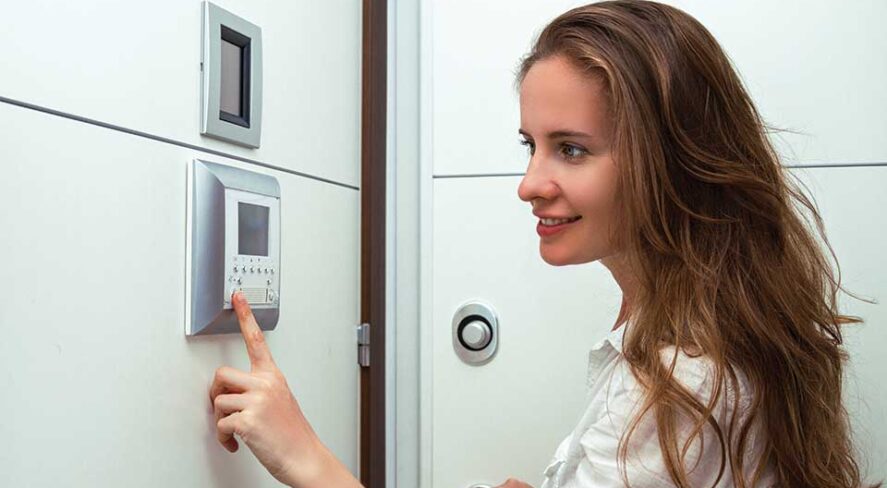Leveraging the Advantages of Access Control and Intercom Integration

Aiphone’s Brad Kamcheff Discusses How, When Combined, the Two Systems Can Enhance Security and Operations

Trusted and cost effective, intercoms have long been a mainstay in the entry control space. They are recognized as one of the first tried and true technologies to manage access into controlled areas. Today, they continue to be successfully deployed in environments such as multitenant facilities, educational institutions, health care campuses and corporate offices, to name a few.
On their own, intercoms are a powerful security tool. The technologies within intercoms enable facilities to screen people before permitting entry to a secure area. Two-way audio allows security staff or front desk personnel to communicate with a visitor, while an intercom equipped with an IP camera enables visual verification.
When an intercom is integrated with an access control system, the capabilities of both technologies are enhanced and the solutions work in tandem to improve security. Together, they enable facility directors to screen visitors, track their whereabouts and document and record access control activities.
For facility executives, having these capabilities is critical to managing access, reducing risk and ensuring the safety of employees and visitors alike.
Increase Security
The adage “two is better than one” accurately describes the benefits of combining access control and intercoms to significantly enhance building security. Access control systems autonomously prevent unauthorized entrance by requiring a person requesting access to either present a credential – such as a badge – enter a passcode on a keypad, or use an enrolled biometric identifier. Intercoms, meanwhile, provide a communication tool and enable front desk staff or security personnel to verify identity and to speak with visitors before they are permitted to enter.
When used together, intercoms and access control systems provide a multilayered approach to security. This is especially important for sensitive areas like IT server rooms, cash rooms and pharmacies. These spaces typically require both a badge in and badge out action and the ability to identify who was in a space at a particular time through event logging.
Facility executives can leverage the natural two-factor authentication capabilities of a combined access control and intercom system. A secure area such as a cash room may require that an individual announce their presence using the intercom before badging in through the access control system and entering the space.
Improved Monitoring
It can be challenging for facility managers to monitor building access. Intercom systems combined with an access control platform can alleviate this problem by providing real-time monitoring of both successful and failed access attempts.
If, for example, a person makes several incorrect entries on an access control key pad, security personnel can use the intercom’s two-way audio to communicate with the individual. They can ask the person if they need assistance, as in the case of an authorized employee who forgot their entrance code, or, if someone who is not permitted to enter the premises is trying to gain access, security personnel can tell them that they are not authorized and to leave the property.
Enhanced Visitor Management
Some spaces, such as schools and certain areas in a hospital, need to always remain secured. A video intercom system allows administrators or security personnel to visually confirm an individual’s identity and talk to the person about the nature of their business before permitting them to enter.
When paired with an access control system, personnel can maintain secure areas throughout a facility. A visitor can be given a badge that allows them to only access certain floors in a hospital, or specific wings or areas in a school.
BETTER Record Keeping
Knowing who has entered and exited a building is important, especially in the event of an emergency, such as a fire or an active shooter incident.
Intercoms and access control systems can provide valuable data on all individuals, whether they are employees, delivery people or visitors. An integrated video intercom system can automatically record interactions with visitors at the front door, while the access control component can record access point data, showing exactly where a person entered the building.
By requiring a person to swipe out, not just swipe in, data can be collected to confirm that an individual left an area at a specific time, or that a person no longer remains in a section of a building that is unsafe.
Swipe-in and swipe-out information can also prove immensely valuable for investigative purposes, as when assets are missing from a secure area or a security breach occurs.
Scalability and Flexibility
As a business grows, its security needs to evolve. This is why it is important to install an access control system that is flexible, can scale up to meet the demand for additional door entry controls, and can integrate with other solutions.
A growing medical practice may find that it needs to incorporate several additional intercom systems throughout its facility to provide communication between patients and medical staff. An X-ray technician, for instance, can use the intercom to safely communicate with a patient while standing in another room.
By combining intercoms and access control systems, facility executives can improve security and operational efficiencies in a variety of ways. Security staff can monitor and restrict access into buildings and areas, while taking advantage of the direct line of communication to the person at the door to quickly diagnose and resolve any access control issues.
